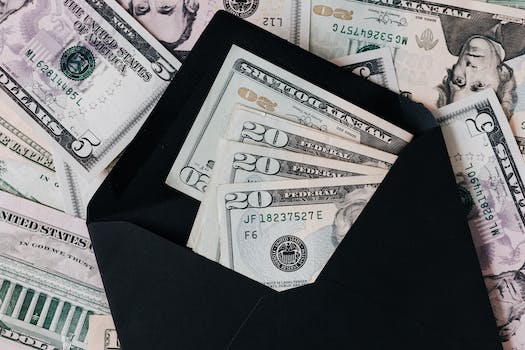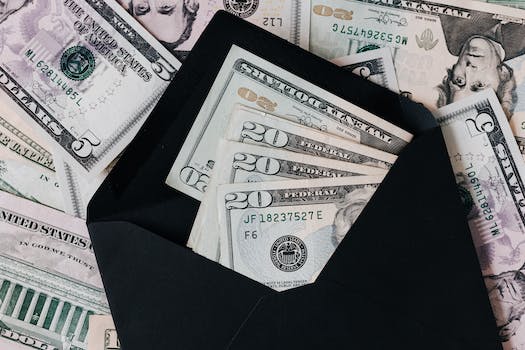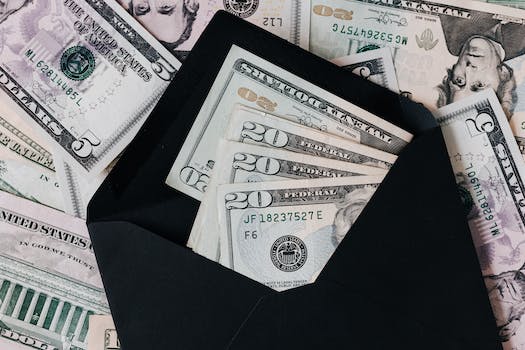How To Save Money Utilities
“Cut costs, not comfort: Tips for saving on your utility bills.”
Introduction
Saving money on utilities is an important aspect of managing your finances. By reducing your energy consumption, you can lower your monthly bills and save money in the long run. In this article, we will discuss some tips on how to save money on utilities.
10 Simple Ways to Reduce Your Electricity Bill
Are you tired of seeing your electricity bill skyrocket every month? Do you want to save money on your utilities but don’t know where to start? Look no further! Here are 10 simple ways to reduce your electricity bill and save money.
1. Unplug appliances when not in use
Did you know that appliances still use electricity even when they’re turned off? This is called standby power, and it can account for up to 10% of your electricity bill. To save money, unplug appliances when you’re not using them, or use a power strip to easily turn them off.
2. Use energy-efficient light bulbs
Switching to energy-efficient light bulbs can save you up to 75% on your lighting costs. LED bulbs are the most energy-efficient and can last up to 25 times longer than traditional incandescent bulbs.
3. Turn off lights when leaving a room
This may seem like a no-brainer, but it’s easy to forget to turn off lights when leaving a room. Make it a habit to turn off lights when you leave a room, and encourage your family members to do the same.
4. Use natural light
Take advantage of natural light by opening curtains and blinds during the day. This will not only save you money on lighting costs, but it can also improve your mood and productivity.
5. Adjust your thermostat
Lowering your thermostat by just one degree can save you up to 3% on your heating bill. In the summer, raise your thermostat a few degrees to save on cooling costs. Consider investing in a programmable thermostat to automatically adjust the temperature when you’re not home.
6. Use ceiling fans
Ceiling fans can help circulate air and make a room feel cooler, allowing you to raise your thermostat a few degrees. Just remember to turn off the fan when you leave the room to save energy.
7. Seal air leaks
Air leaks can cause your heating and cooling systems to work harder, leading to higher energy bills. Seal air leaks around windows, doors, and other areas where air can escape to save money on your utilities.
8. Use energy-efficient appliances
When it’s time to replace appliances, choose energy-efficient models. Look for the ENERGY STAR label, which indicates that the appliance meets energy efficiency guidelines set by the U.S. Environmental Protection Agency.
9. Wash clothes in cold water
Washing clothes in cold water can save you up to 90% on your washing machine’s energy use. Plus, it can help your clothes last longer and prevent shrinking.
10. Air dry clothes
Skip the dryer and air dry your clothes instead. Not only will this save you money on your electricity bill, but it can also extend the life of your clothes and reduce static cling.
By implementing these simple tips, you can save money on your utilities and reduce your environmental impact. Start small and gradually incorporate more energy-saving habits into your daily routine. Your wallet (and the planet) will thank you!
Cutting Costs: Tips for Lowering Your Water Usage

Are you tired of seeing your utility bills skyrocket every month? Do you want to save money on your water usage? Well, you’re in luck! There are plenty of ways to cut costs and lower your water usage without sacrificing your daily routine. Here are some tips to help you save money on utilities.
Firstly, fix any leaks in your home. Leaks can waste a lot of water and money over time. Check your faucets, showerheads, and toilets for leaks. If you find any, fix them immediately. You can easily fix a leaky faucet by replacing the washer or O-ring. For a leaky toilet, you may need to replace the flapper or valve seal. By fixing leaks, you can save up to 10% on your water bill.
Secondly, take shorter showers. Showers can use a lot of water, especially if you take long showers. Try to limit your shower time to 5-10 minutes. You can also install a low-flow showerhead to reduce water usage. Low-flow showerheads can save up to 50% on water usage without sacrificing water pressure.
Thirdly, turn off the tap when brushing your teeth or shaving. Leaving the tap running while brushing your teeth or shaving can waste a lot of water. By turning off the tap, you can save up to 8 gallons of water per day. That’s a lot of water and money saved over time.
Fourthly, only run full loads in your dishwasher and washing machine. Running half loads can waste water and energy. Wait until you have a full load before running your dishwasher or washing machine. You can also use the eco-mode on your appliances to reduce water usage.
Fifthly, water your lawn and garden in the early morning or late evening. Watering your lawn and garden during the hottest part of the day can cause water to evaporate quickly. By watering in the early morning or late evening, you can reduce water usage and ensure that your plants get the water they need.
Lastly, consider installing a rain barrel. Rain barrels collect rainwater from your roof and store it for later use. You can use the collected rainwater to water your lawn and garden, wash your car, or even flush your toilet. By using rainwater, you can reduce your water bill and help conserve water.
In conclusion, there are plenty of ways to save money on utilities, especially when it comes to water usage. By fixing leaks, taking shorter showers, turning off the tap, running full loads, watering your lawn and garden at the right time, and using a rain barrel, you can reduce your water bill and help conserve water. These tips are easy to implement and can save you a lot of money over time. So, start implementing these tips today and see the difference in your utility bills!
Maximizing Your Heating and Cooling Efficiency
Are you tired of paying high utility bills every month? Do you want to save money on your heating and cooling costs? If so, you’re in luck! There are several ways to maximize your heating and cooling efficiency and save money on your utility bills.
First, make sure your home is properly insulated. Insulation helps keep your home warm in the winter and cool in the summer. If your home is not properly insulated, you could be losing a lot of heat or cool air through the walls, ceiling, and floors. This means your heating and cooling system has to work harder to maintain a comfortable temperature, which can lead to higher utility bills.
To check if your home is properly insulated, you can hire a professional to do an energy audit. An energy audit will identify areas of your home that need more insulation and other energy-saving improvements. You can also do a DIY inspection by checking for drafts around windows and doors, and feeling for temperature differences in different parts of your home.
Another way to maximize your heating and cooling efficiency is to upgrade to a programmable thermostat. A programmable thermostat allows you to set different temperatures for different times of the day. For example, you can set the temperature lower at night when you’re sleeping and higher during the day when you’re awake. This can save you money on your utility bills by reducing the amount of energy your heating and cooling system uses when you’re not home or sleeping.
You can also save money on your heating and cooling costs by using ceiling fans. Ceiling fans can help circulate air throughout your home, which can make it feel cooler in the summer and warmer in the winter. In the summer, make sure your ceiling fan is rotating counterclockwise to create a cool breeze. In the winter, switch the direction to clockwise to push warm air down from the ceiling.
Another way to maximize your heating and cooling efficiency is to keep your HVAC system well-maintained. This includes changing the air filter regularly, cleaning the coils, and having a professional tune-up your system once a year. A well-maintained HVAC system will run more efficiently, which can save you money on your utility bills.
Finally, consider upgrading to a more energy-efficient heating and cooling system. Energy-efficient systems use less energy to heat and cool your home, which can save you money on your utility bills. Look for systems with a high SEER (Seasonal Energy Efficiency Ratio) rating for air conditioners and a high AFUE (Annual Fuel Utilization Efficiency) rating for furnaces.
In conclusion, there are several ways to maximize your heating and cooling efficiency and save money on your utility bills. Make sure your home is properly insulated, upgrade to a programmable thermostat, use ceiling fans, keep your HVAC system well-maintained, and consider upgrading to a more energy-efficient system. By following these tips, you can enjoy a comfortable home while saving money on your utility bills.
The Benefits of Energy-Efficient Appliances
Are you tired of paying high utility bills every month? Do you want to save money on your energy bills? If so, then investing in energy-efficient appliances is the way to go. Not only will you save money on your monthly bills, but you will also be doing your part to help the environment. In this article, we will discuss the benefits of energy-efficient appliances and how they can help you save money on your utilities.
Firstly, energy-efficient appliances use less energy than their traditional counterparts. This means that they require less electricity to operate, which translates to lower energy bills. For example, an energy-efficient refrigerator can save you up to 40% on your energy bills compared to a traditional refrigerator. Similarly, an energy-efficient washing machine can save you up to 50% on your energy bills compared to a traditional washing machine.
Secondly, energy-efficient appliances are designed to last longer than traditional appliances. This means that you will not have to replace them as often, which can save you money in the long run. For example, an energy-efficient refrigerator can last up to 20 years, while a traditional refrigerator may only last up to 10 years. Similarly, an energy-efficient washing machine can last up to 15 years, while a traditional washing machine may only last up to 8 years.
Thirdly, energy-efficient appliances are better for the environment. They use less energy, which means that they produce fewer greenhouse gas emissions. This is important because greenhouse gas emissions contribute to climate change, which is a major global issue. By using energy-efficient appliances, you can reduce your carbon footprint and help to protect the environment.
So, how can you save money on your utilities by investing in energy-efficient appliances? Firstly, you can take advantage of rebates and incentives offered by your utility company. Many utility companies offer rebates and incentives for customers who purchase energy-efficient appliances. These rebates and incentives can help to offset the cost of the appliance, making it more affordable for you.
Secondly, you can save money on your energy bills by using your energy-efficient appliances wisely. For example, you can run your washing machine and dishwasher only when they are full, which will reduce the number of cycles you need to run. You can also use your appliances during off-peak hours, when energy rates are lower. This will help to reduce your energy bills even further.
In conclusion, investing in energy-efficient appliances is a smart way to save money on your utilities. Not only will you save money on your monthly bills, but you will also be doing your part to help the environment. Energy-efficient appliances use less energy, last longer, and are better for the environment. By taking advantage of rebates and incentives offered by your utility company and using your appliances wisely, you can save even more money on your energy bills. So, what are you waiting for? Start shopping for energy-efficient appliances today and start saving money on your utilities!
DIY Home Insulation: A Cost-Effective Solution
Are you tired of paying high utility bills every month? Do you want to save money on your energy costs? One of the best ways to do this is by insulating your home. DIY home insulation is a cost-effective solution that can help you save money on your utility bills while also making your home more comfortable.
Insulating your home can help keep it warm in the winter and cool in the summer. This means that you won’t have to rely as much on your heating and cooling systems, which can save you a lot of money over time. In fact, according to the U.S. Department of Energy, homeowners can save up to 20% on their heating and cooling costs by properly insulating their homes.
The first step in insulating your home is to identify areas that need insulation. Common areas that need insulation include attics, walls, floors, and basements. You can use a thermal imaging camera or a professional energy audit to identify areas that need insulation.
Once you have identified the areas that need insulation, you can start the DIY insulation process. There are several types of insulation materials that you can use, including fiberglass, cellulose, and spray foam. Each type of insulation has its own pros and cons, so it’s important to do your research and choose the best option for your home.
Fiberglass insulation is one of the most popular types of insulation. It’s easy to install and relatively inexpensive. However, it’s not as effective as other types of insulation at preventing air leaks. Cellulose insulation is made from recycled materials and is a good option for those who want an eco-friendly insulation solution. It’s also effective at preventing air leaks. Spray foam insulation is the most expensive option, but it’s also the most effective at preventing air leaks and providing insulation.
Before you start the insulation process, make sure you have all the necessary tools and equipment. You’ll need insulation materials, a utility knife, a staple gun, a caulking gun, and safety equipment such as gloves and goggles.
When installing insulation, it’s important to follow the manufacturer’s instructions carefully. Make sure you wear protective gear and work in a well-ventilated area. Use a staple gun to secure the insulation in place and use caulking to seal any gaps or cracks.
In addition to insulating your home, there are other things you can do to save money on your utility bills. For example, you can install a programmable thermostat to help regulate your home’s temperature. You can also replace your old light bulbs with energy-efficient LED bulbs and unplug electronics when they’re not in use.
In conclusion, DIY home insulation is a cost-effective solution that can help you save money on your utility bills. By properly insulating your home, you can keep it warm in the winter and cool in the summer, which means you won’t have to rely as much on your heating and cooling systems. There are several types of insulation materials to choose from, so make sure you do your research and choose the best option for your home. Remember to follow the manufacturer’s instructions carefully and wear protective gear when installing insulation. With a little bit of effort, you can save money on your utility bills and make your home more comfortable.
Conclusion
Conclusion: To save money on utilities, it is important to be mindful of your energy usage and make small changes to reduce consumption. This can include turning off lights and electronics when not in use, using energy-efficient appliances, adjusting thermostat settings, and sealing air leaks in your home. Additionally, shopping around for utility providers and negotiating rates can also help save money on monthly bills. By implementing these strategies, you can lower your utility costs and save money in the long run.






